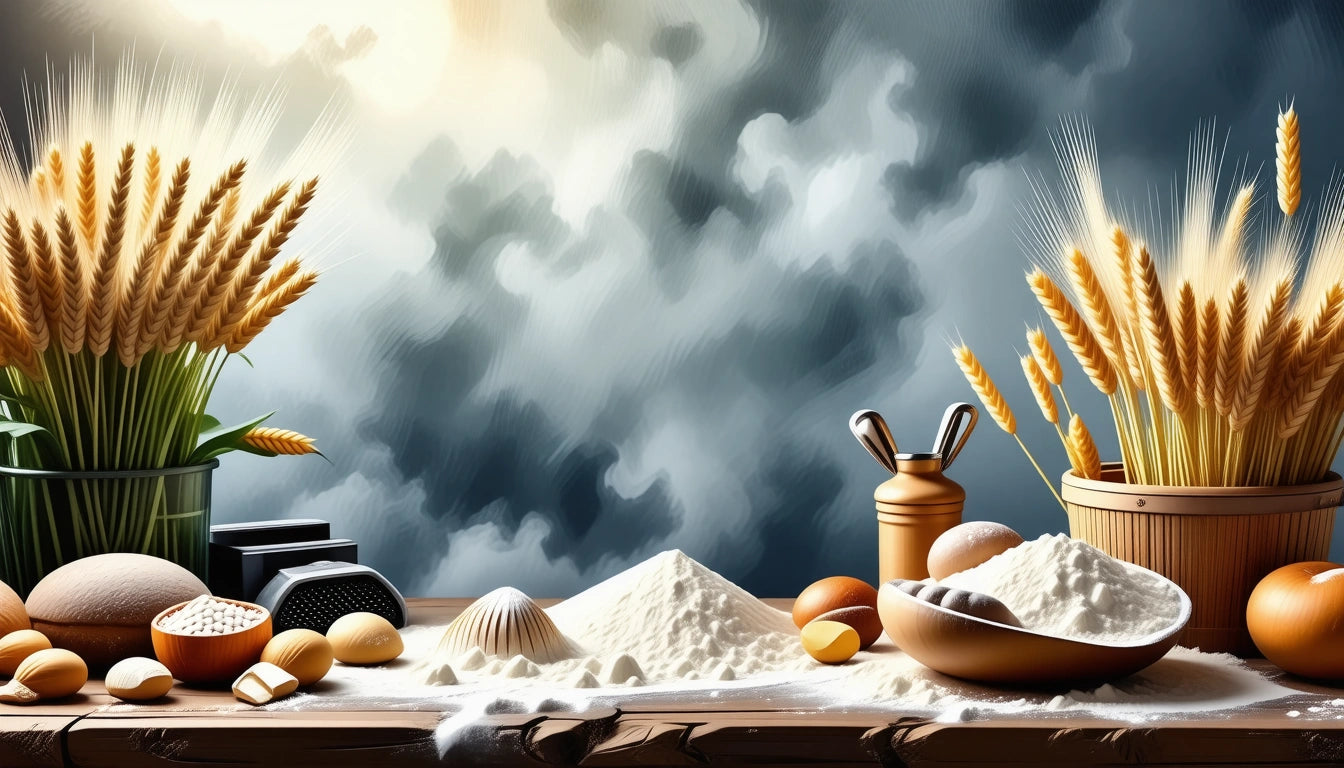From Wheat to Wonders: The Journey from Grain to Flour and Delicious Recipes
Wheat flour forms the foundation of countless culinary creations across cultures worldwide. Understanding how wheat is made into flour and what to make with wheat flour opens up a world of culinary possibilities. This comprehensive guide explores the fascinating journey from wheat fields to your kitchen table, including the milling process, flour varieties, and versatile applications.
The Journey: How Is Wheat Made Into Flour
The transformation of wheat into flour involves several carefully orchestrated steps, beginning in the field and ending with the fine powder we use in our kitchens.
Harvesting and Cleaning
Modern wheat harvesting typically occurs once the grain reaches maturity and dries to the appropriate moisture content. Combines cut, thresh, and separate the wheat kernels from stalks and chaff. The harvested grain then undergoes thorough cleaning to remove stones, sticks, and other foreign materials.
Conditioning and Tempering
Before milling, wheat kernels are conditioned by adding water to achieve optimal moisture content. This tempering process toughens the bran and softens the endosperm, making separation easier. Wheat typically rests for 6-24 hours during this phase, depending on the variety.
The Milling Process
Modern flour milling uses a gradual reduction process:
- Breaking: Roller mills crack wheat kernels open, separating the endosperm from bran and germ
- Grinding: The endosperm pieces pass through a series of rollers that progressively reduce particle size
- Sifting: Between grinding stages, flour is sifted through screens to separate by particle size
- Purifying: Air currents remove remaining bran particles from the endosperm
- Bleaching and enriching: Some flours undergo natural aging or chemical treatments to improve baking properties
For specialty and whole grain flours, the process may include the bran and germ components, which contain valuable nutrients but can affect shelf life and texture.
Types of Wheat and Their Flour Varieties
Different wheat varieties produce flours with varying protein content and gluten-forming potential, making them suitable for specific applications.
Hard Wheat Flours
Hard wheat varieties contain higher protein content (10-14%) and produce strong gluten networks ideal for:
- Bread flour: Perfect for yeast breads, bagels, and pizza crusts
- High-gluten flour: Used for artisanal breads with chewy textures
- Whole wheat flour: Contains the entire wheat kernel, offering more nutrients and fiber
Soft Wheat Flours
Soft wheat varieties have lower protein content (8-10%) and produce more tender results:
- Cake flour: Creates delicate, fine-textured cakes
- Pastry flour: Ideal for flaky pie crusts and tender cookies
- All-purpose flour: A versatile blend of hard and soft wheats
When storing these various flours, proper containers are essential. Many bakers use airtight storage solutions like mylar bags to maintain freshness and prevent moisture absorption, especially for whole grain flours that contain oils prone to rancidity.
What to Make With Wheat Flour: Culinary Applications
The versatility of wheat flour makes it indispensable in kitchens worldwide, with applications ranging from staple foods to complex pastries.
Bread Making
Bread represents one of humanity's oldest and most universal wheat flour applications:
- Yeast breads: From rustic boules to sandwich loaves
- Quick breads: Muffins, biscuits, and scones
- Flatbreads: Pitas, naan, and tortillas
For those interested in creative baking, you might explore infused baking techniques to add unique flavors to traditional recipes.
Pastries and Desserts
The low protein content in pastry and cake flours creates tender, delicate textures perfect for:
- Cakes and cupcakes
- Cookies and brownies
- Pie crusts and tarts
Experimenting with different flour types can dramatically change the texture and mouthfeel of desserts. For instance, cookie recipes might use bread flour for chewiness or cake flour for tenderness.
Pasta and Noodles
Durum wheat semolina, a coarsely ground high-protein flour, creates the ideal texture for pasta products:
- Italian pasta varieties
- Asian noodle types
- Dumplings and wrappers
Specialty and Artisanal Wheat Flour Recipes
Beyond everyday applications, wheat flour shines in specialty recipes that showcase its versatility.
Sourdough and Fermented Breads
The natural fermentation process in sourdough bread-making creates complex flavors and improved digestibility. The process involves:
- Cultivating a starter culture of wild yeasts and beneficial bacteria
- Long fermentation periods that develop flavor and break down gluten proteins
- Creating distinctive textures and tangy flavors
Alternative Baking Methods
Creative bakers continue to develop innovative approaches to working with wheat flour:
- No-knead techniques that develop gluten through time rather than mechanical action
- Tangzhong and other pre-gelatinization methods for softer, longer-lasting breads
- Laminated doughs for croissants and other layered pastries
Many bakers also experiment with infused oils to add complexity to their flour-based creations.
Proper Storage and Handling of Wheat Flour
Maximizing the shelf life and quality of wheat flour requires proper storage techniques:
- Store in cool, dry locations away from direct sunlight
- Use airtight containers to prevent moisture absorption and pest infestation
- Refrigerate or freeze whole grain flours to prevent rancidity
- Label with purchase dates to track freshness
Understanding flour's shelf life helps reduce waste and ensure optimal results in your recipes. Generally, white flours last 6-12 months at room temperature, while whole grain flours remain fresh for only 1-3 months unless refrigerated.
Innovations and Future Trends in Wheat Flour Production
The wheat flour industry continues to evolve with changing consumer preferences and technological advancements:
- Heritage and ancient grain varieties gaining popularity for flavor and nutritional profiles
- Sustainable farming practices reducing environmental impact
- Improved milling technologies preserving more nutrients
- Specialized flours for dietary needs, including low-carb and gluten-sensitive options
As interest in artisanal baking grows, many home bakers are exploring alternative ingredients and techniques to create unique flour-based products with distinctive flavors and textures.
Whether you're a professional baker or home cooking enthusiast, understanding how wheat is made into flour and what to make with wheat flour provides the foundation for countless culinary adventures. From simple daily bread to elaborate pastries, wheat flour's versatility continues to inspire culinary creativity across cultures and traditions.











Leave a comment
All comments are moderated before being published.
This site is protected by hCaptcha and the hCaptcha Privacy Policy and Terms of Service apply.